Why retail tech adoption has to be contextual & strategic to drive right results
By Retail4Growth Bureau | October 31, 2025
In his second article as part of this series on digital transformation in retail, renowned interaction designer and Managing Director of Digital Tranzform Pvt. Ltd., Anurag Sehgal, talks about a scalable, long-term model that addresses the pain points of all key stakeholders in the retail eco-system, while driving a tech-led transformation strategy.

In the dynamic world of retail, staying ahead of the curve isn't just a goal—it's a necessity. The digital landscape is evolving at a breakneck pace, and for brands & retailers, a strategic approach to digital transformation is more critical than ever. In the first article of this series, we explored popular digital transformation frameworks for retail - https://www.retail4growth.com/viewpoints/digital-retail-transformation-is-a-people-centered-tech-aided-journey-and-not-a-tech-centric-one-1278
Now, I will introduce a powerful model my company has pioneered to help brands and retailers establish effective and successful transformations.
Before we dive into the model, let’s first clarify two crucial definitions that will set the stage for our discussion.
Experiential vs. Utilitarian Retail Tech
Retail technology can be broadly categorized into two main types, each serving a distinct purpose.
- Experiential Retail Tech focuses on creating engaging and memorable experiences for customers to drive engagement and conversion. Think of solutions like digital signages that grab attention, interactive product configurators, virtual try-on mirrors, or product information kiosks. These technologies directly interact with the shopper, enriching their journey and influencing their decisions.
- Utilitarian Retail Tech operates behind the scenes, providing the essential data and tools needed for operational efficiency. This includes solutions like integrated inventory management systems, Point of Sale (POS) billing, footfall counters, and IoT trackers. These technologies streamline back-end processes, improve staff efficiency, and provide valuable insights that inform business decisions.
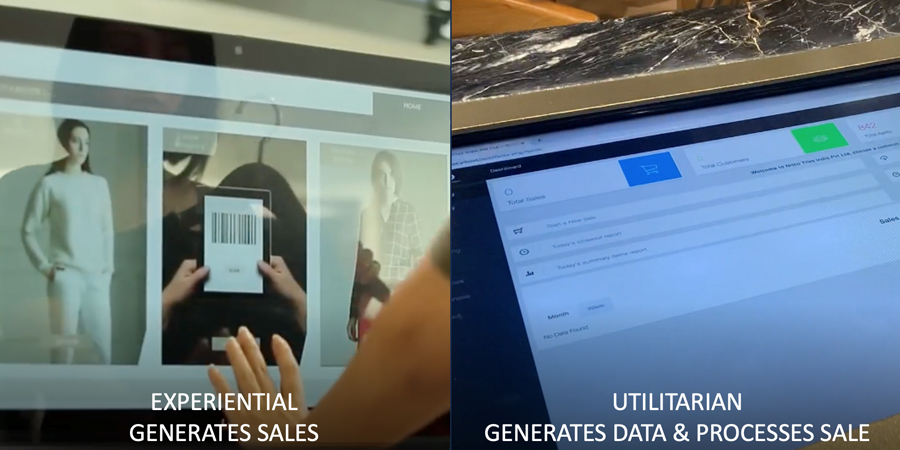
The Problem with Reactive Retail Transformation
Most retail transformations today are a product of a reactive approach rather than a proactive strategy. Brands and retailers often implement new technology only when a problem arises that requires a tech solution or when they come across a solution in an exhibition or via a competitor’s success story and suddenly plan to adopt.
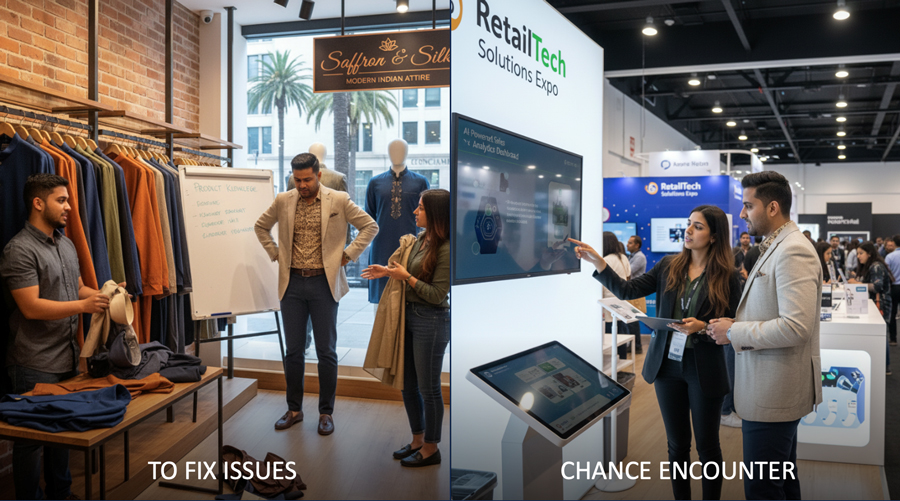
This reactive mindset leads to two major issues, particularly for experiential technologies:
1. Context Mismatch: A one-size-fits-all approach to retail tech rarely works – especially for experiential retail tech. Having worked with numerous companies within the same industry, I can attest that no two businesses have the exact same pain points, stakeholders, standard operating procedures, or back-end operations. When a generic tech solution is implemented without considering a company's unique context, it often falls short, leading to frustration and wasted investment. The success or failure of the transformation hinges on this critical alignment.

2. Frankenstein Stacks: The reactive, piecemeal approach of acquiring disparate hardware, SaaS tools, and internal developments results in what I call "Frankenstein Stacks." These are collections of solutions that don't integrate seamlessly, leading to duplication of effort, inefficiencies, and systems that conflict with one another. This disjointed tech stack erodes the return on investment and can lead to a sense of disillusionment about the benefits of technology itself.
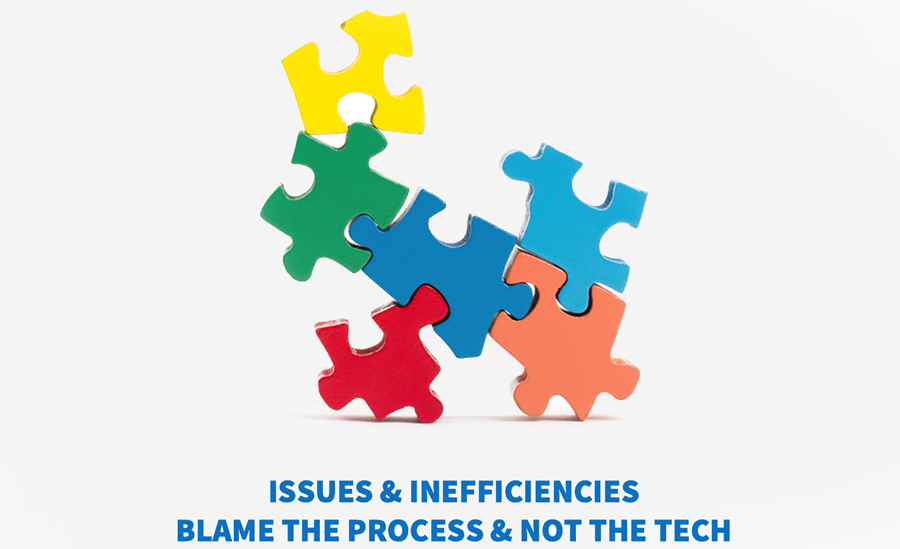
This problem is further compounded by leadership changes. New leaders often arrive with their own biases and an attraction to the latest buzzwords or trendy tech - AI, ML, AR, VR - treating them as ready-made solutions rather than components of a cohesive, long-term plan.
This short-sightedness can derail a transformation, leaving the company with a jumble of incompatible tools. It’s like the old saying: if you measure a fish by its ability to climb a tree, you’ll spend its whole life believing it’s a failure. In the same way, we can't blame technology for not working when it was never chosen or customized for the specific needs of the business. The opportunity lies in planning to use technology - that can swim, walk, and fly – and aligning it with a clear, documented approach.
The DTx RTx Model: A Blueprint for Retail Transformation
To counter these common pitfalls, we have created a simple, yet powerful, model that ensures a strategic and indisputable process for retail transformation. This model, which we call the DTx RTx Model, delivers a dynamic roadmap that keeps current and future leadership aligned, ensuring continuous improvement and coherence.
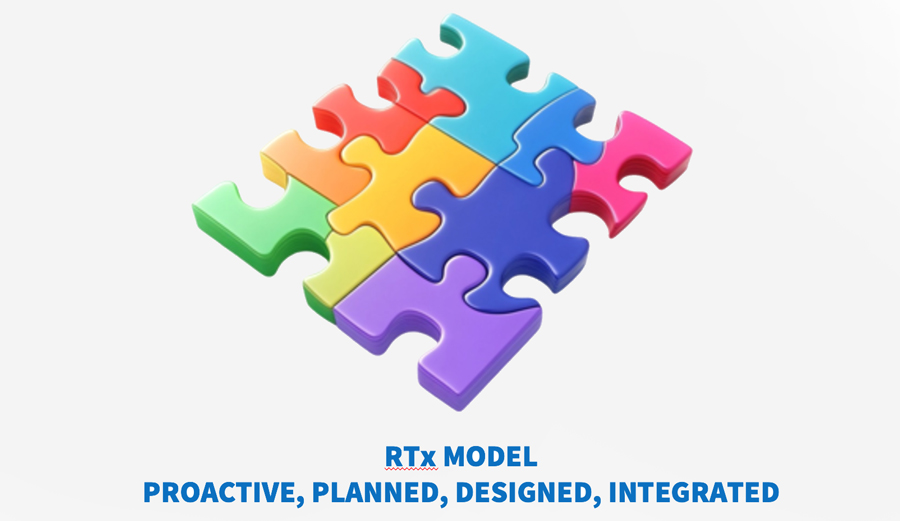
The model is based on a series of logical steps, each with its own processes and deliverables:
1. Stakeholders: The R.I.S.E. of Retail: The first step is to identify all stakeholders involved in the retail ecosystem. We have categorized them into four key groups: Retailers, Influencers, Shoppers, and Employees. This includes everyone from online influencers and last-mile technicians to shop floor staff and even the shopper’s friends and family. The primary focus of this funnel is always the stakeholder who monetizes the funnel - the shopper - followed by the influencers and the retailer.
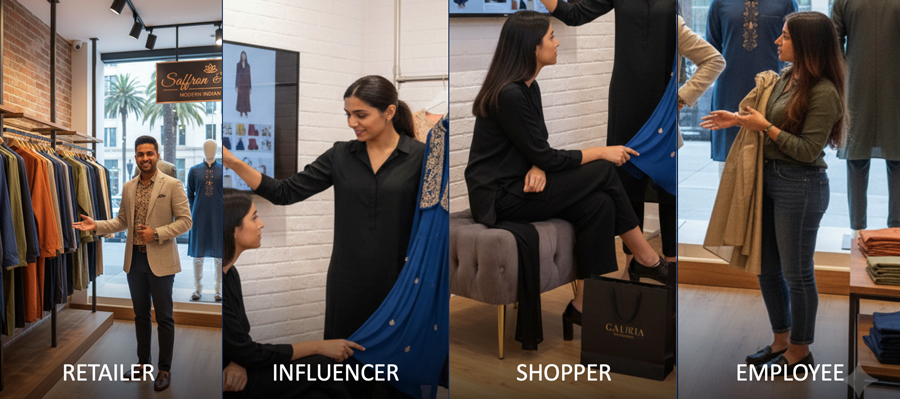
2. Journeys: Once stakeholders are identified, the next step is to define their journeys. These journeys are broken down into four key segments: Onboarding, Experience, Relationship, and Loyalty. These are then mapped across a seamless retail journey, encompassing the Pre-Store, In-Store, and Post-Store stages.
3. Channels: We then define the three key omnichannel touchpoints: At Home, In-Store, and Online. This ensures a comprehensive view of how stakeholders interact with the brand across different environments.
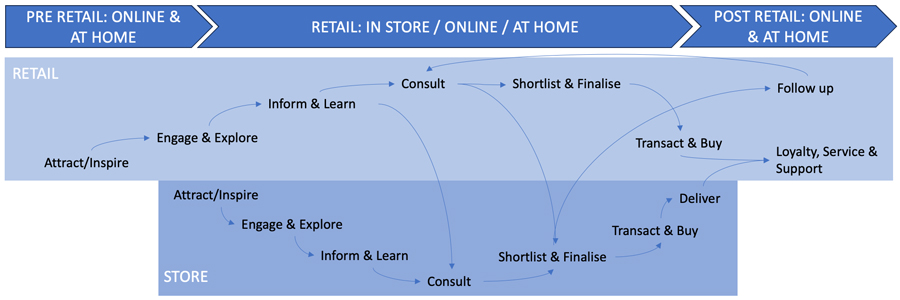
4. Pain Points: This is a crucial step. By mapping the pain points of the R.I.S.E. stakeholders against the defined journeys and channels, we can identify specific areas that need improvement.
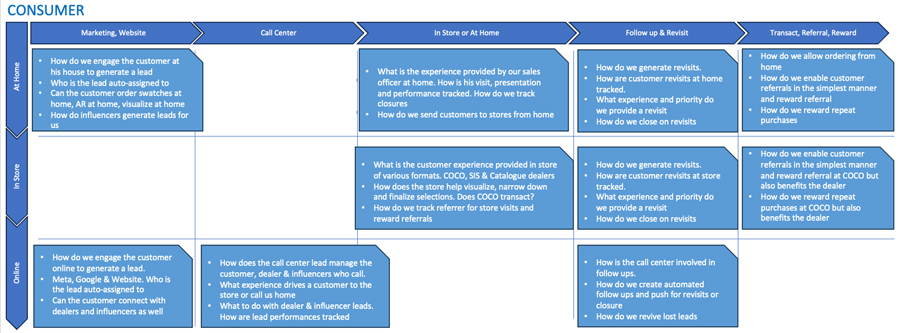
5. Solution Stack: With the pain points clearly defined, we can then create a Solution Stack—a series of features and solutions designed to address them. This step involves integrating all existing solutions and features while strategically planning for new ones that will be integrated seamlessly with the existing tech.
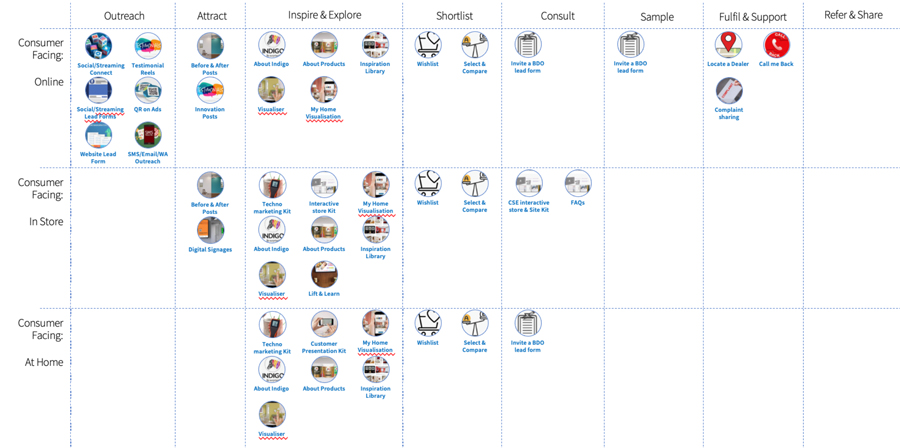
6. Tech Stack: Finally, the Tech Stack is defined. This involves detailing the integrated technology elements—both existing and new—that will deliver the features and solutions identified in the previous step. This ensures that all hardware, SaaS tools, and custom developments are planned to work together cohesively.
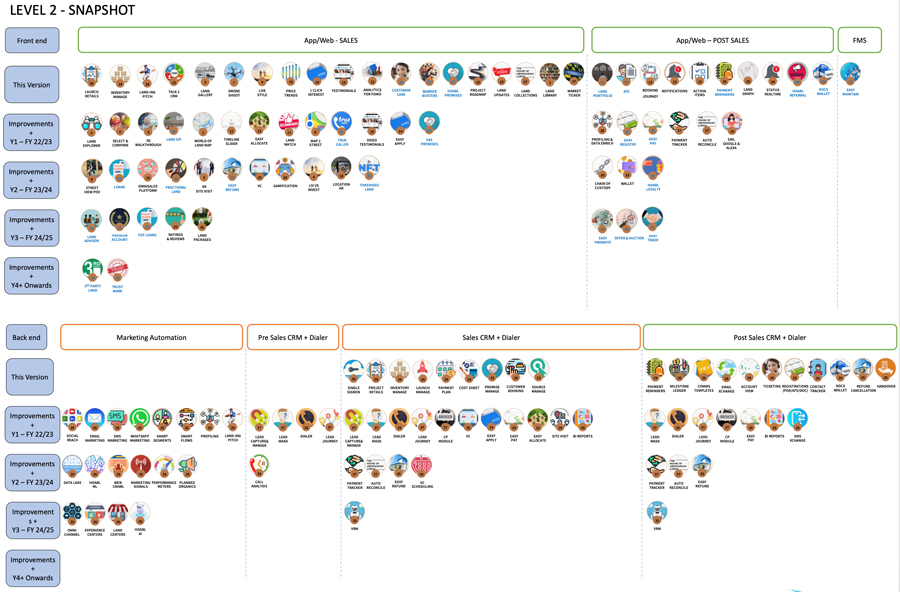
The Minimum Viable Experience: From Blueprint to Reality
An ideal retail transformation roadmap is a three-to-five-year blueprint, a collection of 20 to 30 solutions that will vary between Low-Investment-High-Impact (LIHI), Low-Investment-Low-Impact (LILI), and High-Investment-High-Impact (HIHI).
However, a successful transformation doesn't happen all at once. The Minimum Viable Experience (MVE) is the initial set of solutions implemented to create a positive, immediate impact and validate the long-term blueprint. Typically, this consists of 5 to 7 solutions that create a tangible, initial impact. Following the MVE, 2 to 3 new solutions are released every six months, continuously improving the organization’s top-line and bottom-line performance.
SUMMARY:
In summary, a scalable retail transformation is a long-term, strategic roadmap that systematically solves the pain points of the four key retail stakeholders—the R.I.S.E. of retail. By using an integrated, technology-aided approach, this model ensures that new leaders can contribute meaningfully to the plan without derailing the overall effort. This eliminates inefficiencies, prevents duplicated investments, and ultimately benefits the organization by having a meaningful impact on the stakeholders who drive its numbers, all while being pivoted around the consumer.

_165_265.jpg)


_140_270.jpg)




Comments